Invisalign® Clear Braces – Lewisville, TX
Straightening Your Smile While Looking Your Best
Many adults are bothered by gaps in their smile or noticeably crooked teeth but aren’t sure what to do about it. Wearing braces for months or even years while you’ve got a professional image to think about usually isn’t a very enticing prospect. Fortunately, Dr. Capehart has an aesthetically friendly alternative: Invisalign in Lewisville. This treatment will give you the better smile you’ve always wanted without the need for unsightly brackets and wires. If you’re interested in a consultation, contact us to make an appointment today!
How Does Invisalign Work?

Invisalign uses multiple clear, custom-made aligners made and provided by the Invisalign lab. Each aligner in the set you receive will represent a different step in in the treatment. An individual aligner needs to be worn for at least 22 hours a day over the course of about two weeks before moving on to the next one. Dr. Capehart will schedule regular appointments (usually every six weeks or so) in order to make sure you’re making progress; sometimes you’ll need to wear an aligner for longer than usual.
Why is Invisalign a Good Choice?
- As the name implies, Invisalign aligners are clear and hard to see when you’re wearing them; only people who even know what they’re looking for in the first place are likely to notice.
- Because the aligners are removable, no changes to your diet are necessary; you can enjoy hard or sticky foods without worrying that they’ll damage your appliance. Furthermore, you’ll be able to brush and floss normally without having to work around any wires.
- Invisalign aligners are made of a smooth plastic that feels comfortable in the mouth. You won’t have to worry about metallic irritation.
- Have a big event coming up that you need to look your best at? As long as you promptly put it back afterward, you can take your Invisalign out for an hour or so!
Who Can Invisalign Help?
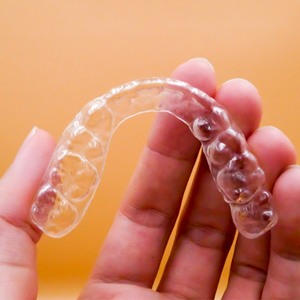
Invisalign can be used to treat a wide variety of orthodontic issues. Keep in mind, though, that for certain complex problems traditional braces might be the best answer. After an examination, Dr. Capehart will be able to tell you whether Invisalign can help with the changes you want. In general, Invisalign is good for correcting:
Crowded Teeth
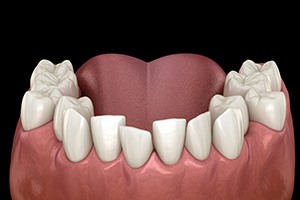
Oftentimes, patients are focused on the aesthetic drawbacks of crooked teeth. However, if your teeth overlap or are tilted out of alignment, you’re at an increased risk for oral health problems like tooth decay as well. So, for the sake of the look, health, and function of your smile, schedule a consultation with us to find out if you’re a candidate for Invisalign! If you are, then we will create a custom series of aligners that will gently move your teeth out of their current positions and into their ideal ones.
Gaps Between Teeth
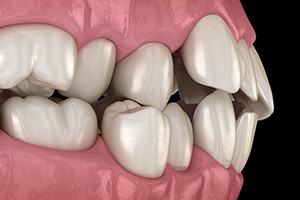
Similar to crowded teeth, gapped teeth can negatively impact multiple aspects of your smile – from how it looks to how it functions. Fortunately, Invisalign can be used to address mild to moderate cases. If we determine that clear aligners will work for you, then your journey to a straight smile will be virtually undetectable and completely comfortable.
Overbite
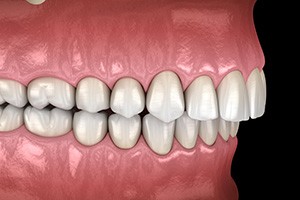
Overbites are quite common, and, unfortunately, they can impact much more than just the look of your smile. In fact, patients with this orthodontic problem often experience trouble chewing properly and enunciating clearly. Plus, there’s always the risk of chronic jaw pain and premature wear and tear. So, don’t put off scheduling an appointment with us; we want to bring your teeth and bite into proper alignment as quickly as possible.
Underbite
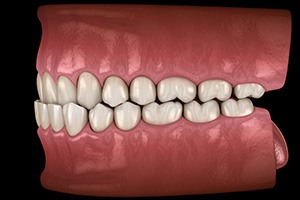
If your lower teeth naturally sit in front of your upper ones, then you likely have an underbite. There are a few problems with this orthodontic issue, starting with the fact that immense pressure is being placed on your jaw. That’s why so many patients experience chronic jaw pain, TMJ dysfunction, and other complications. There is some good news though: Invisalign may be an option if your case isn’t too severe!
Crossbite
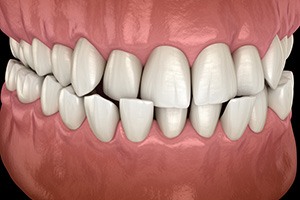
Like the other bite problems on this list, crossbites can negatively impact your oral health in a number of ways. There are also drawbacks when it comes to aesthetics, which is why patients often visit us for a consultation. No matter the reason for your visit, Dr. Capehart looks forward to welcoming you to our office, learning more about your dental history, hearing your aesthetic goals, and determining if Invisalign is right for you.
Open Bite
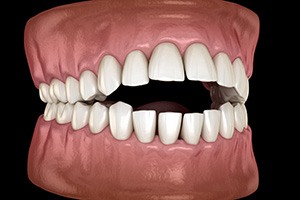
Open bites are often the result of genetics, but they can also develop from childhood habits like thumb-sucking. Regardless, it’s important to explore your orthodontic treatment options before complications arise, like premature wear and tear on certain teeth. The first step? Scheduling a consultation so we can assess the complexity of your case!
Note that since the aligners need to be left in the mouth for a certain amount of time each day, they’re usually not suitable for young children who are prone to taking them out or forgetting them.
How Long Does the Invisalign Process Take?
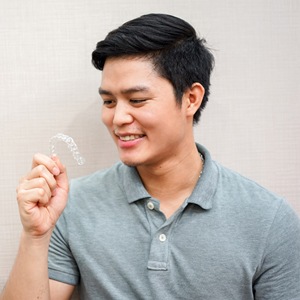
Depending on the severity of the problem, Invisalign treatment can take anywhere from 6 to 24 months. Simple cases such as slightly crooked teeth will generally only take about 12 to 18 months, while crowded teeth and other complex issues might take longer. Note that if you don’t wear your aligners for the required 22 hours each day, the treatment is likely to take longer and might not be as effective in the end.
Living with Invisalign Aligners

Since Invisalign is so popular, you probably already know quite a bit about it, including that the aligners are completely see-through and the average treatment timeline is only 12-18 months. But what will your day-to-day life with Invisalign look like? In this next section, you’ll find the answer!
Wearing Your Trays

Simply put, wearing your aligners for 20+ hours a day is crucial when it comes to staying on-track with your treatment plan. At first, this may take some experimenting. For example, you may find that dedicating 40 minutes to each meal works best for you. Or, you might find that using a stopwatch throughout the day is more ideal since your routine isn’t as structured. Whatever the case may be, make your daily wear time a priority – it will go a long way in preventing frustrating treatment plan delays!
Cleaning Your Aligners
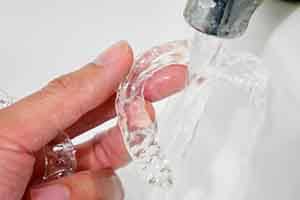
Good news: cleaning your aligners is easy. In fact, it will only take you a minute, and you can use the same products you already have! The first step is getting into the habit of rinsing your trays with clean, cool water when you take them out (this will remove saliva, food particles, and other debris from the surface). The second step is using a damp, soft-bristled toothbrush to clean the aligners after each meal. If needed, you can also use a clear, mild dishwashing liquid, but don’t use toothpaste or bleach.
Eating & Drinking

Basically, there is one rule: you need to take your aligners off before eating or drinking anything other than water. That way, they don’t stain, warp, or break. Make sure to always store them somewhere safe too, like their designated storage case. If you wrap them in a napkin or leave them out on the table instead, there’s a good chance that they will accidentally get thrown away or misplaced.
Losing a Tray

If you can’t seem to find your Invisalign aligners, try to calmly retrace your steps, starting from the last place you know you had them. It’s important to look in places like the waste bin, the center console of your car, and the space between your bed and your nightstand in the process. If they really are lost, then give our Lewisville dental team a call to let us know. Then, we can determine if it’s safe to move onto the next set in the series a bit early or if replacement trays need to be made.
Routine Check-Ins

The check-in visits throughout your Invisalign treatment are important for several reasons. One of the most notable ones is that they allow us to periodically examine how your teeth are moving in comparison to your treatment plan. If they are moving as expected, then your visit will be quite short (about 15 minutes or so). If they aren’t, then it might take a bit longer since we need to determine the root of the problem and what adjustments need to be made to your treatment plan.
Understanding the Cost of Invisalign
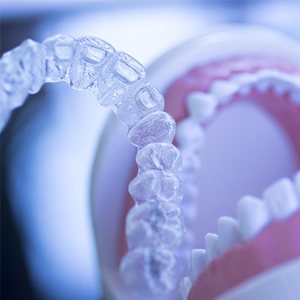
With Invisalign, you’ll have a completely customized orthodontic treatment to help you achieve the straight smile you’ve always wanted. This also means that every patient’s process will be somewhat different. For this reason, the overall cost of Invisalign in Lewisville will depend on your specific dental needs, your smile goals, and other essential factors. The only way to provide you with a more accurate estimate of how much you’ll pay is by scheduling an initial consultation with our team. We’ll assess your oral health, develop a detailed treatment plan and timeframe, and discuss your financing options. Until then, here are several things you should consider before undergoing Invisalign.
Factors That Affect the Cost of Invisalign

Every orthodontic case is different. Even so, there are a few factors that can impact the final price of your Invisalign treatment, including:
- Length of treatment – You’ll need to work through a series of clear aligners to correct your bite. The longer the treatment is, the more aligners you’ll need, and the higher the overall cost.
- Case complexity – Those with more severe orthodontic issues may require a more extensive treatment process. Of course, this will also raise the final price.
- Your compliance with the process – For your clear aligners to work, you’ll need to wear them for 20-22 hours a day. If not, you may end up needing to increase the length of your treatment as well as the price.
Invisalign vs. Smile Direct Club™: Which Costs More?
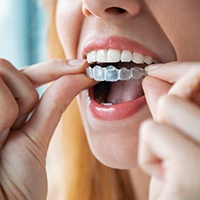
While Invisalign is one of the more popular and reliable orthodontic methods out there, it isn’t the only treatment you can opt for. There are also mail-in aligners such as Smile Direct Club™, which claim to offer a much quicker and more convenient process. Although this may seem tempting, most DIY orthodontic treatments can end up costing you more time and money in the long run. They may even result in damage to your smile, meaning you’ll need professional care anyway!
DIY options typically have no direct oversight from a dentist, which leaves plenty of room for error. These complications may involve aligners that don’t fit properly, incorrect dental impressions, and even missed oral health concerns that need to be addressed (e.g. cavities and gum disease). However, by undergoing Invisalign from Capehart Dental in Lewisville, we’ll help you every step of your orthodontic journey, ensuring that your treatment goes exactly as planned without any hiccups. While it may have a higher total cost, the reliability and beautiful results make it worth every penny.
Does Dental Insurance Cover Invisalign?
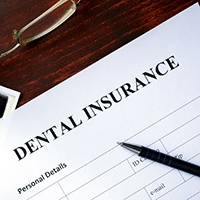
Only a few dental insurance companies offer coverage for orthodontic procedures. Even then, not all of them will cover Invisalign specifically. Our team will be more than happy to help you navigate the details of your policy to discover if you’ll receive any coverage for your treatment. Our friendly and knowledgeable staff has years of experience helping our patients make the most of their insurance benefits and minimize their out-of-pocket expenses!
Options for Making Invisalign Affordable

Even if you don’t have insurance, you may be eligible for alternative financing options to afford Invisalign. For instance, we have a Capehart Care Plan which can give you at least a 10% discount on all services, including orthodontic treatment. We’re also partnered with CareCredit—a third-party financier that can help break up the overall cost of dental procedures into small, monthly installments. Many of their plans also come with little to zero interest, meaning you won’t have to empty your wallet to achieve the straight smile you’ve always wanted.
Invisalign FAQs
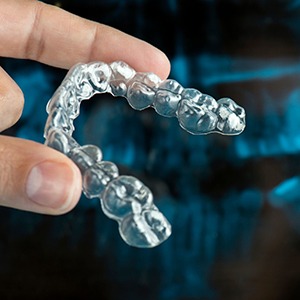
Invisalign in Lewisville is arguably the best way to align your teeth and reap all of the benefits of a straight and healthy smile. It’s perfectly normal, though, for you to have some questions before going through with the treatment. That’s why we’ve taken the liberty of answering some of the Invisalign FAQs that we get asked the most often.
Does Invisalign Hurt?
When you first receive your trays, or you switch to a new set of aligners, your teeth may feel a bit sore and sensitive. That actually means your treatment is working. Invisalign works by exerting a gentle pressure on your teeth to shift them into a more desirable position. This discomfort should subside after a few days, but in the meantime, you can alleviate the pain by taking an over-the-counter medication like ibuprofen or acetaminophen.
How Do I Keep My Aligners from Staining?
If you don’t take good care of your aligners, they can quickly become yellow or brown, making them quite noticeable. Here are a few tips to prevent this:
- Brush your teeth before every time you place your aligners in. Otherwise, food particles could get trapped between your teeth and aligners, staining your trays.
- Brush your aligners every time you remove them. Do NOT use toothpaste, as that could be abrasive to the plastic.
- Don’t drink anything besides water with your aligners in, especially coffee or wine.
- If you’re a smoker, consider quitting. That habit can stain your aligners faster than anything.
Will Invisalign Affect How I Speak?
At first, yes. It might sound like you have a bit of a lisp. This is because there are a lot of sounds that are produced by placing your tongue against the backs of your front teeth, where your aligner now is. This new distance could be changed by Invisalign and your tongue may get a little confused at first. However, your lisp should fade away after a week or so as your tongue grows accustomed to your aligners.
What If I Lose an Aligner?
If you misplace an aligner and you only have a couple of days until you were supposed to move on to the next tray anyway, it’s fine to go ahead and make the switch. On the other hand, if you just changed your tray and already lost it, it’s best to give us a call. We can give you a replacement aligner to keep your smile on the right track. In the meantime, wear your last set of aligners to prevent your teeth from shifting back into their previous crooked state.
Will I Have to Wear a Retainer After Invisalign Treatment?
Yes. As soon as you stop wearing your trays, your teeth will naturally want to move back into their original position they were in before treatment. Although every case is different, you’ll generally have to wear a retainer as often as you wore your aligners for the first few months after treatment is finished. After that, you might be able to only wear it at night.
